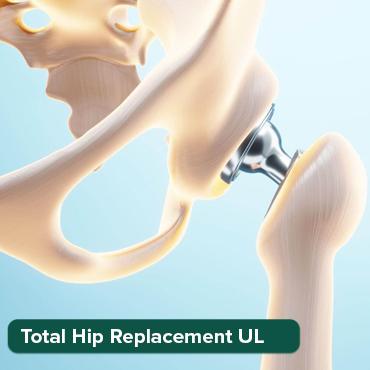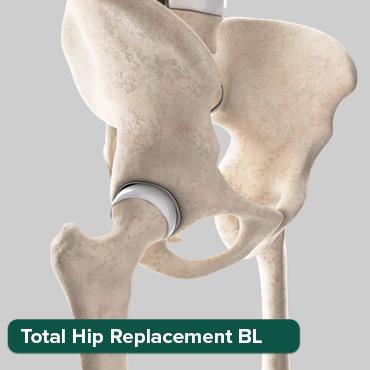
Exercise Plans After Neuro Surgery Recommended by Healthtrip
02 Aug, 2025
 Healthtrip
HealthtripUnderstanding the Importance of Post-Surgery Exercise
Engaging in a well-structured exercise program after neuro surgery is not just about regaining physical strength; it's about promoting healing, improving neurological function, and enhancing your overall quality of life. The period following surgery can often lead to muscle weakness, stiffness, and decreased mobility. Targeted exercises can help to counteract these effects by stimulating muscle growth, improving joint flexibility, and restoring balance and coordination. Furthermore, physical activity plays a crucial role in boosting circulation, which is essential for delivering nutrients and oxygen to the healing tissues, accelerating the recovery process. From a neurological standpoint, exercise can stimulate neuroplasticity, the brain's ability to reorganize itself by forming new neural connections. This can be particularly beneficial in regaining lost motor skills or improving cognitive function. Healthtrip recognizes the vital role of comprehensive post-operative care and can assist you in locating rehabilitation specialists associated with hospitals like Vejthani Hospital or Saudi German Hospital Cairo, Egypt, who can design an exercise program to address your individual needs and optimize your recovery potential. Remember, every small step forward is a victory on your path to regaining your independence and rediscovering the joys of an active lifestyle.
Most popular procedures in India
Key Components of a Post-Neuro Surgery Exercise Plan
A comprehensive exercise plan following neuro surgery typically includes a blend of different types of exercises, each designed to address specific aspects of your recovery. These usually start with range-of-motion exercises which gently move your joints through their full range to prevent stiffness and improve flexibility. These are low impact movements that can be performed even in the early stages of recovery. Next comes strengthening exercises which aim to rebuild muscle mass and improve overall strength, which may involve using light weights or resistance bands, gradually increasing the intensity as you get stronger. Balance and coordination exercises are very important, as neuro surgery can sometimes affect your sense of balance. These exercises can include activities like standing on one leg or practicing simple movements while maintaining your balance. Finally, cardiovascular exercises are beneficial for improving your overall fitness and endurance. Activities like walking or stationary cycling can gradually increase your heart rate and improve your stamina. Healthtrip can help you connect with experienced physiotherapists at facilities like Bangkok Hospital or Hisar Intercontinental Hospital who can assess your individual needs and design a personalized exercise plan that gradually incorporates these key components. Remember, consistency is key, and it's important to listen to your body and avoid pushing yourself too hard, especially in the initial stages of recovery.
Precautions and Considerations Before Starting
Before diving into any exercise plan post-neuro surgery, it's extremely important to prioritize safety and take certain precautions. Always consult with your neurosurgeon or rehabilitation specialist at hospitals like Quironsalud Hospital Murcia or NMC Specialty Hospital, Abu Dhabi, to get clearance for physical activity. They can evaluate your specific condition and provide tailored recommendations based on your surgical outcome and overall health status. Start slowly and gradually increase the intensity and duration of your workouts. Don't rush the process, and be patient with your body as it heals. Pay close attention to your body's signals. If you experience any pain, dizziness, or other unusual symptoms, stop immediately and consult with your healthcare provider. Ensure that you have a safe and supportive environment for exercising. This may involve removing obstacles from your workout area or having someone nearby to assist you if needed. Stay hydrated by drinking plenty of water before, during, and after your exercise sessions. This will help your body function optimally and prevent dehydration-related complications. Healthtrip emphasizes the importance of informed decision-making and can provide you with access to reputable medical professionals who can guide you through the pre-exercise assessment process, ensuring a safe and effective recovery journey. Remember, your health is your priority, and taking these precautions will help you minimize risks and maximize the benefits of exercise.
Wellness Treatments
Give yourself the time to relax
Lowest Prices Guaranteed!

Lowest Prices Guaranteed!
Sample Exercise Plan for Early Stages of Recovery
In the initial weeks following neuro surgery, the focus is primarily on promoting healing and preventing complications. This means starting with gentle exercises that don't put excessive strain on your body. A typical early-stage exercise plan might include ankle pumps, where you gently move your feet up and down to improve circulation in your legs. Next are quad sets, which involve tightening the muscles in your thighs while keeping your leg straight. Then you have gentle neck rotations, slowly turning your head from side to side to improve neck mobility. Shoulder blade squeezes involve pinching your shoulder blades together to strengthen your upper back muscles. Short walks within your home are also beneficial for improving circulation and building endurance. Each exercise should be performed for a few repetitions, gradually increasing the number as you feel comfortable. Healthtrip can help connect you with physical therapists affiliated with hospitals like Memorial Bahçelievler Hospital or Yanhee International Hospital who can provide personalized guidance. They can also modify these exercises to suit your specific needs and limitations. It's important to remember that this is just a sample plan, and your actual exercise regimen should be tailored to your individual condition and under the supervision of a qualified healthcare professional. Listen to your body, rest when you need to, and celebrate every small milestone you achieve.
Progressing Your Exercise Plan as You Heal
As your recovery progresses and you feel stronger, it's time to gradually increase the intensity and complexity of your exercise plan. This should be done in consultation with your healthcare team at institutions like Fortis Memorial Research Institute, Gurgaon, or Cleveland Clinic London, who can monitor your progress and adjust your program accordingly. You might start incorporating resistance exercises using light weights or resistance bands to further strengthen your muscles. Balance exercises can become more challenging, such as standing on an unstable surface or performing movements with your eyes closed. Cardiovascular exercises can also be gradually increased, such as walking for longer distances or adding inclines to your treadmill workout. A more advanced exercise plan might also include activities like swimming or cycling, which are low-impact and can help to improve your overall fitness. It's essential to listen to your body and avoid pushing yourself too hard. If you experience any pain or discomfort, reduce the intensity of the exercise or take a break. Healthtrip recognizes that progressing your exercise plan requires careful monitoring and adjustments. We can connect you with rehabilitation specialists who can provide guidance and support throughout your recovery journey. Remember, the goal is to gradually regain your strength and function, not to overdo it and risk setbacks. Celebrate your progress, stay motivated, and enjoy the journey of rediscovering your physical abilities.
Maintaining a Long-Term Exercise Routine
Once you've reached a point where you feel comfortable with your exercise routine, it's important to establish a long-term plan to maintain your progress and prevent future problems. This means continuing to engage in regular physical activity, even after your formal rehabilitation program is complete. Aim for a variety of exercises that address different aspects of your fitness, including strength, flexibility, balance, and cardiovascular health. Find activities that you enjoy, as this will make it easier to stick to your routine. Consider joining a gym or fitness class, or finding a workout buddy to help you stay motivated. Make exercise a part of your daily or weekly schedule, just like any other important appointment. Listen to your body and adjust your routine as needed. If you experience any pain or discomfort, consult with your healthcare provider at places like LIV Hospital, Istanbul, or Jiménez Díaz Foundation University Hospital for guidance. Healthtrip understands that maintaining long-term health requires ongoing commitment and support. We can provide you with resources and information to help you stay active and motivated. Remember, exercise is not just about physical health; it's also about mental and emotional well-being. By making exercise a regular part of your life, you can improve your overall quality of life and enjoy the many benefits of a healthy, active lifestyle.
The Importance of Exercise After Neurosurgery
Undergoing neurosurgery is a significant event in a person's life, marking the beginning of a journey toward recovery and improved well-being. While the surgery itself addresses the immediate medical concern, the post-operative period is crucial for regaining strength, mobility, and overall quality of life. Exercise plays a pivotal role in this recovery phase, acting as a powerful tool to stimulate healing, rebuild lost function, and prevent potential complications. Think of your body as a finely tuned machine that has undergone a major repair. Just as a machine needs careful calibration and use after being fixed, your body requires targeted exercise to re-establish its optimal performance. Exercise helps to improve blood circulation, which is essential for delivering nutrients and oxygen to the surgical site, promoting tissue repair and reducing inflammation. It also aids in preventing blood clots, a common risk after surgery, especially when mobility is limited. Furthermore, exercise can combat muscle weakness and stiffness that often result from prolonged bed rest and reduced activity. Beyond the physical benefits, exercise has a profound impact on your mental and emotional state. It releases endorphins, natural mood boosters that can help alleviate pain, reduce anxiety, and combat feelings of depression that may arise during recovery. Embracing a tailored exercise program after neurosurgery is not just about regaining physical strength; it's about reclaiming your life, your independence, and your overall sense of well-being. Healthtrip understands the importance of comprehensive care, connecting you with medical professionals who can guide you through this crucial recovery phase, ensuring you receive personalized support and access to the best resources to regain your health and zest for life. Saudi German Hospital Cairo, Egypt, and Fortis Memorial Research Institute, Gurgaon, India, are examples of hospitals that may offer specialized post-neurosurgical rehabilitation programs.
Where to Start: Initial Recovery Phase
The initial recovery phase after neurosurgery is a delicate period that requires a cautious and gradual approach to exercise. It's not about rushing back to your pre-surgery fitness level; instead, it's about carefully reintroducing movement and activity to stimulate healing and prevent setbacks. The first few days and weeks following surgery are primarily focused on rest and allowing your body to recover from the procedure. During this time, even simple activities like getting out of bed, walking to the bathroom, and sitting in a chair should be considered forms of exercise. These movements, though seemingly small, help to improve circulation, prevent stiffness, and promote early mobility. As you progress, your healthcare team, including your surgeon, neurologist, and physical therapist, will guide you on when and how to gradually increase your activity level. They will assess your individual needs, taking into account factors such as the type of surgery you had, your pre-existing health conditions, and your overall progress. The key is to listen to your body and avoid pushing yourself too hard, too soon. Pain is a signal that you need to slow down or modify your activity. Gentle stretching exercises can help to improve flexibility and reduce muscle tension, while simple breathing exercises can promote relaxation and improve lung function. Remember, the initial recovery phase is about building a foundation for future progress. It's a time to focus on small, achievable goals, celebrating each milestone along the way. Healthtrip can help connect you with experienced physical therapists and rehabilitation centers that specialize in post-neurosurgical care, ensuring you receive the guidance and support you need to navigate this crucial phase of your recovery journey. Hospitals like Fortis Shalimar Bagh and Vejthani Hospital offer comprehensive rehabilitation programs.
Who Should Participate: Tailoring Exercise Plans
Exercise after neurosurgery isn't a one-size-fits-all approach; it's a highly individualized process that requires careful tailoring to meet each person's unique needs and circumstances. The ideal exercise plan should be designed in collaboration with your healthcare team, including your surgeon, neurologist, physical therapist, and occupational therapist. These professionals will conduct a thorough assessment to determine your current physical abilities, limitations, and goals. They will consider factors such as the type of surgery you had, the extent of your neurological deficits, your pre-existing health conditions, and your overall fitness level. Based on this assessment, they will develop a personalized exercise program that is safe, effective, and appropriate for your individual needs. The type of surgery you underwent will significantly influence the exercises you can perform. For example, someone who had surgery for a herniated disc may have different limitations and exercise recommendations compared to someone who had surgery for a brain tumor. Similarly, the presence of neurological deficits, such as weakness, numbness, or balance problems, will need to be carefully considered when designing your exercise plan. People with pre-existing health conditions, such as heart disease, diabetes, or arthritis, may also need to modify their exercise routines to avoid exacerbating these conditions. It's crucial to remember that exercise is not just for those who were physically active before surgery. Even individuals who were previously sedentary can benefit from a tailored exercise program after neurosurgery. In fact, exercise can be particularly important for these individuals to help them regain strength, mobility, and independence. Healthtrip recognizes the importance of personalized care, connecting you with healthcare professionals who have expertise in post-neurosurgical rehabilitation. They can help you develop an exercise plan that is safe, effective, and tailored to your individual needs, ensuring you receive the support and guidance you need to achieve your recovery goals. Consider exploring options at hospitals like Memorial Sisli Hospital or Bangkok Hospital, known for their multidisciplinary approach to patient care.
Also Read:
How to Exercise Safely: Guidelines and Precautions
Embarking on an exercise regimen after neurosurgery requires a cautious and informed approach. It's not about pushing yourself to the limit right away; it's about gradually rebuilding your strength and endurance while minimizing the risk of complications. The golden rule here is to listen to your body. If you experience any pain, dizziness, or unusual symptoms, stop immediately and consult with your healthcare provider or physical therapist. This isn't just a suggestion; it's a crucial step in ensuring a safe and effective recovery. Remember, every individual's recovery journey is unique, and what works for one person might not work for another. So, tailor your exercise plan to your specific needs and limitations, always under the guidance of medical professionals who understand your case inside and out. They can help you monitor your progress, adjust your exercises as needed, and address any concerns that may arise along the way. Safety is paramount, and taking these precautions will set you on the path to a successful and sustainable recovery.
One of the most important aspects of exercising safely after neurosurgery is to start slow and gradually increase the intensity and duration of your workouts. Don't try to do too much too soon. Begin with gentle exercises that focus on improving your range of motion and flexibility. As you get stronger, you can gradually add more challenging exercises that target specific muscle groups. This incremental approach allows your body to adapt to the increased demands and reduces the risk of injury. It's also essential to maintain proper posture and technique during all exercises. Incorrect form can put unnecessary stress on your joints and muscles, potentially leading to pain or even re-injury. If you're unsure about the correct way to perform an exercise, ask your physical therapist for guidance. They can provide valuable feedback and help you correct any errors in your form. Staying hydrated is equally important, so drink plenty of water before, during, and after your workouts to prevent dehydration and muscle cramps. You've been through a lot, so be kind to yourself and remember that progress, not perfection, is the goal.
Furthermore, it's crucial to avoid exercises that put excessive stress on your head or spine. Activities like heavy lifting, high-impact aerobics, and contact sports should be avoided until your doctor gives you the green light. These activities can increase the risk of complications such as spinal instability or increased intracranial pressure. Instead, focus on low-impact exercises that are gentle on your body, like walking, swimming, or cycling. These activities can help improve your cardiovascular health, strengthen your muscles, and boost your overall well-being without putting undue stress on your surgical site. Additionally, be mindful of your environment. Avoid exercising in hot, humid conditions, as this can lead to overheating and dehydration. Choose a well-ventilated space with adequate lighting to minimize the risk of falls or accidents. And finally, don't hesitate to take breaks when you need them. Rest and recovery are just as important as exercise, so allow your body ample time to heal and rebuild. It’s a marathon, not a sprint, after all.
Also Read:
Exercise Examples and Sample Plans
Now, let's dive into some practical exercise examples and sample plans that can help you get started on your post-neurosurgery recovery journey. Remember, these are just guidelines, and it's essential to consult with your healthcare provider or physical therapist to tailor a plan that's right for you. We'll focus on exercises that are generally considered safe and effective for most individuals, but modifications may be necessary depending on your specific condition and limitations. The key is to start with simple exercises and gradually progress to more challenging ones as you regain strength and mobility. And don't forget to listen to your body and stop if you experience any pain or discomfort. Recovery is a journey, not a race, and patience is your best friend.
One of the most fundamental exercises for post-neurosurgery recovery is gentle stretching. Stretching helps improve flexibility, reduce muscle stiffness, and promote relaxation. Start with simple stretches like neck rolls, shoulder shrugs, and ankle pumps. Perform each stretch slowly and gently, holding it for 15-30 seconds. Avoid bouncing or forcing the stretch, as this can increase the risk of injury. As you become more comfortable, you can gradually add more challenging stretches that target specific muscle groups. For example, you can try hamstring stretches, calf stretches, or chest stretches. Remember to breathe deeply and evenly throughout each stretch, and focus on relaxing your muscles. Stretching can be a great way to ease tension, improve circulation, and prepare your body for more strenuous activities. Think of it as a gentle wake-up call for your muscles, preparing them for the day ahead.
In addition to stretching, low-impact aerobic exercises are also beneficial for post-neurosurgery recovery. Walking is an excellent option, as it's easy to do, requires no special equipment, and can be adjusted to your fitness level. Start with short walks around your home or neighborhood, and gradually increase the distance and duration as you get stronger. Other low-impact aerobic exercises include swimming, cycling, and water aerobics. These activities are gentle on your joints and can help improve your cardiovascular health, strengthen your muscles, and boost your overall well-being. Just be sure to avoid activities that put excessive stress on your head or spine, such as running or jumping. A sample plan might look like this: Week 1: 10-15 minutes of gentle walking daily, followed by 5 minutes of stretching. Week 2: Increase walking time to 20-25 minutes daily, and add 5 minutes of light strength training exercises. Week 3: Increase walking time to 30 minutes daily, and gradually increase the intensity of your strength training exercises. Remember, consistency is key, so try to stick to your exercise plan as much as possible. But don't beat yourself up if you miss a day or two. Just get back on track as soon as you can.
Also Read:
Rehabilitation Centers and Hospitals
Choosing the right rehabilitation center or hospital is a crucial step in your post-neurosurgery recovery journey. These facilities offer specialized programs and services designed to help you regain your strength, mobility, and independence. They often have multidisciplinary teams of healthcare professionals, including physical therapists, occupational therapists, speech therapists, and neurologists, who work together to create a personalized treatment plan tailored to your specific needs. The goal is not just to help you recover physically, but also to address any cognitive, emotional, or social challenges you may be facing. It's a holistic approach that focuses on your overall well-being. When selecting a rehabilitation center or hospital, consider factors such as the facility's reputation, the expertise of its staff, the range of services offered, and the location and cost. You want to find a place that feels comfortable and supportive, where you feel confident that you're receiving the best possible care.
Many hospitals now offer comprehensive rehabilitation programs for patients recovering from neurosurgery. For instance, Fortis Hospital, Noida (https://www.healthtrip.com/hospital/fortis-hospital-noida) and Fortis Memorial Research Institute, Gurgaon (https://www.healthtrip.com/hospital/fortis-memorial-research-institute) in India are well-regarded for their neurological rehabilitation services. These hospitals typically provide a range of therapies, including physical therapy to improve strength and mobility, occupational therapy to help with daily living skills, and speech therapy to address communication difficulties. They may also offer specialized programs for patients with specific neurological conditions, such as stroke or traumatic brain injury. In Germany, Helios Klinikum Erfurt (https://www.healthtrip.com/hospital/helios-klinikum-erfurt-2) and Helios Emil von Behring (https://www.healthtrip.com/hospital/helios-klinikum-emil-von-behring) offer similar services, leveraging advanced technology and experienced medical staff to aid recovery. Similarly, in Turkey, Memorial Sisli Hospital (https://www.healthtrip.com/hospital/memorial-sisli-hospital) and LIV Hospital, Istanbul (https://www.healthtrip.com/hospital/liv-hospital) are known for their comprehensive rehabilitation services with modern facilities.
Beyond hospitals, specialized rehabilitation centers offer focused care and support. These centers often have a more intensive rehabilitation program than hospitals, with a greater emphasis on physical and occupational therapy. They may also offer support groups and counseling services to help patients cope with the emotional challenges of recovery. Some well-regarded rehabilitation centers include the Shirley Ryan AbilityLab in Chicago, USA, and the Kessler Institute for Rehabilitation in New Jersey, USA. These facilities are known for their cutting-edge research and innovative treatment approaches. However, it's essential to do your own research and find a rehabilitation center or hospital that meets your specific needs and preferences. Talk to your doctor or neurosurgeon for recommendations, and visit several facilities before making a decision. Ask questions about their programs, staff, and facilities, and make sure you feel comfortable and confident in their ability to help you recover. Your peace of mind is an important part of the healing process.
Conclusion
Navigating the path to recovery after neurosurgery can feel like climbing a mountain, but with the right knowledge, support, and a positive mindset, you can reach the summit. Remember, exercise plays a vital role in your recovery, helping you regain your strength, mobility, and independence. But it's essential to approach exercise safely and cautiously, always under the guidance of medical professionals. Start slow, listen to your body, and gradually increase the intensity and duration of your workouts. Choose exercises that are gentle on your head and spine, and avoid activities that put excessive stress on your surgical site. And don't forget to prioritize rest and recovery, as these are just as important as exercise. It's a journey, not a race, and patience is your best friend. Embrace the challenges, celebrate the small victories, and never lose sight of your goals.
Your recovery is a testament to your resilience and determination. By understanding the importance of exercise, knowing where to start, tailoring your plan appropriately, exercising safely, exploring various exercise examples, and selecting the right rehabilitation resources, you are actively investing in your future well-being. Healthtrip is here to support you with information and access to top medical facilities around the world, such as Saudi German Hospital Alexandria, Egypt (https://www.healthtrip.com/hospital/saudi-german-hospital-cairo), Quironsalud Hospital Murcia (https://www.healthtrip.com/hospital/quironsalud-hospital-murcia) in Spain, or Vejthani Hospital in Thailand (https://www.healthtrip.com/hospital/vejthani-hospital), ensuring you have access to quality care and rehabilitation services. Remember, this journey is uniquely yours, and every step you take, no matter how small, brings you closer to a full and vibrant life. Embrace each day with hope and determination, knowing that you have the strength within you to overcome any obstacle.
Related Blogs

Patient Satisfaction Scores for Plastic Surgery at Healthtrip Partner Hospitals
Explore evaluations, innovations, hospital comparisons, and global success insights for

How to Choose the Right Hospital for Plastic Surgery Using Healthtrip's Criteria
Explore evaluations, innovations, hospital comparisons, and global success insights for

Latest Global Innovations in Plastic Surgery Now Available in India
Explore evaluations, innovations, hospital comparisons, and global success insights for

How Healthtrip Ensures Evidence-Based Care in Plastic Surgery
Explore evaluations, innovations, hospital comparisons, and global success insights for

Success Rates of Plastic Surgery in India Compared to Other Countries
Explore evaluations, innovations, hospital comparisons, and global success insights for

Complete Medical Evaluation Process Before Plastic Surgery
Explore evaluations, innovations, hospital comparisons, and global success insights for










